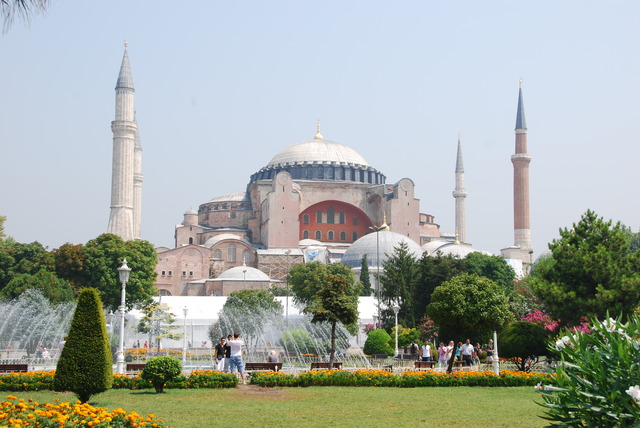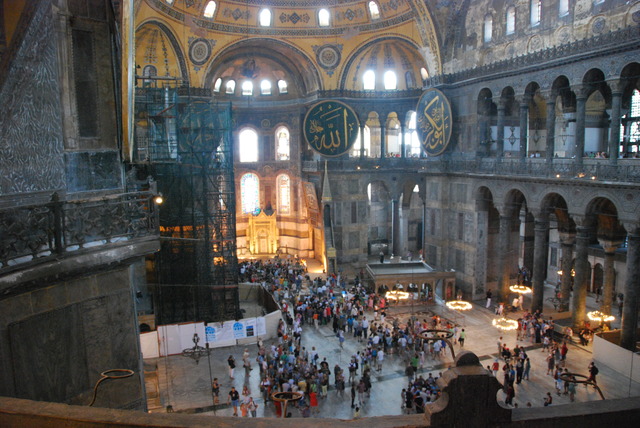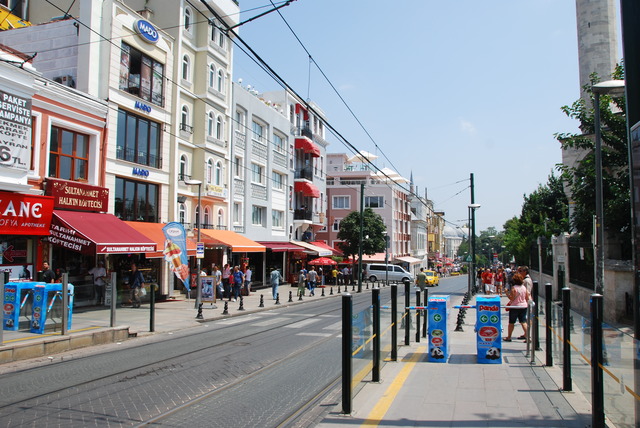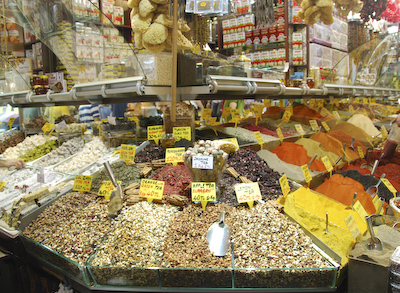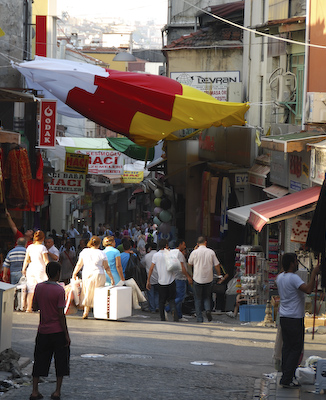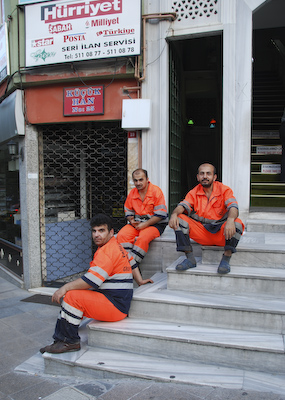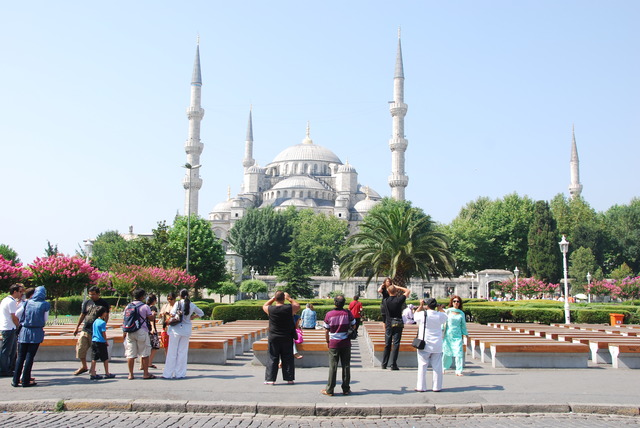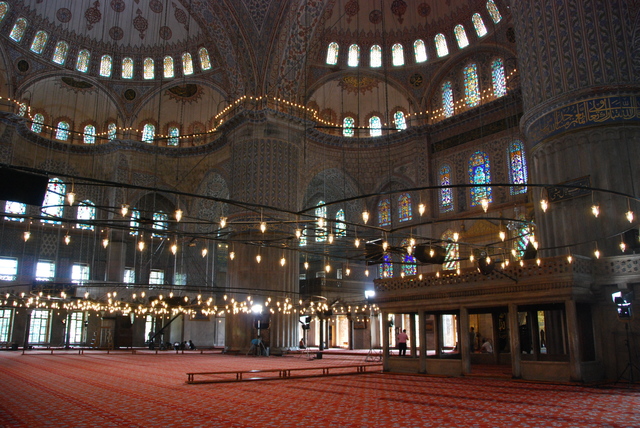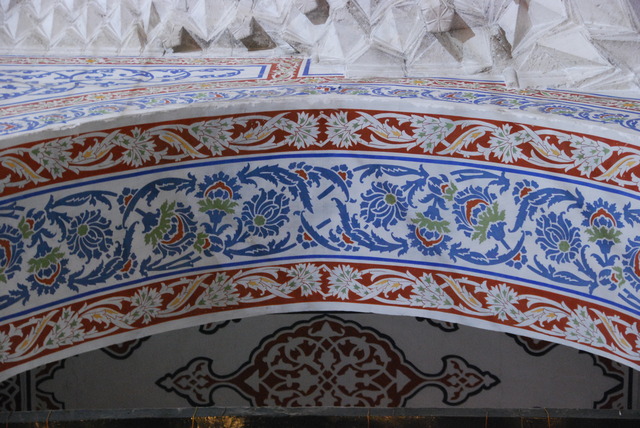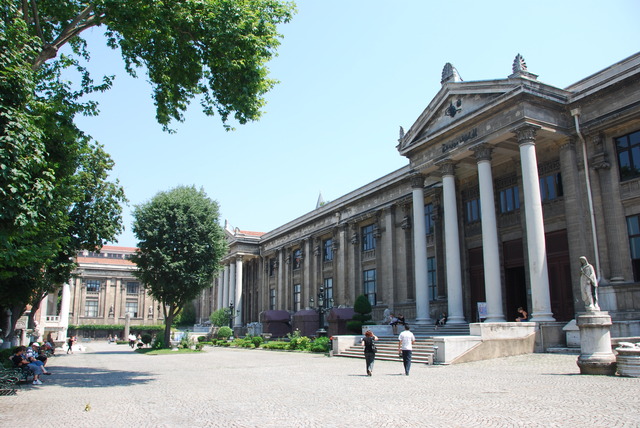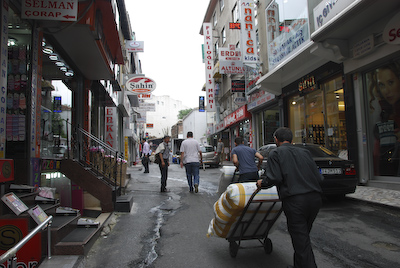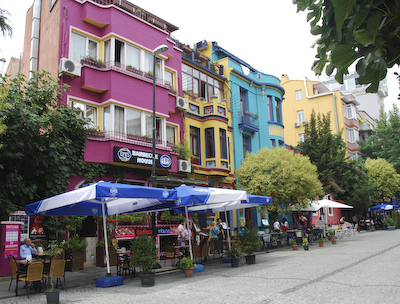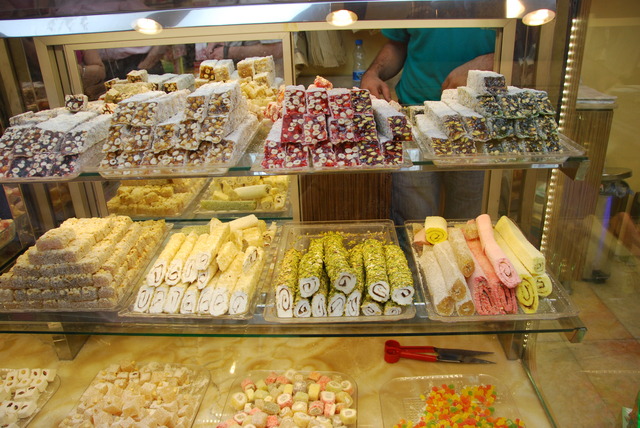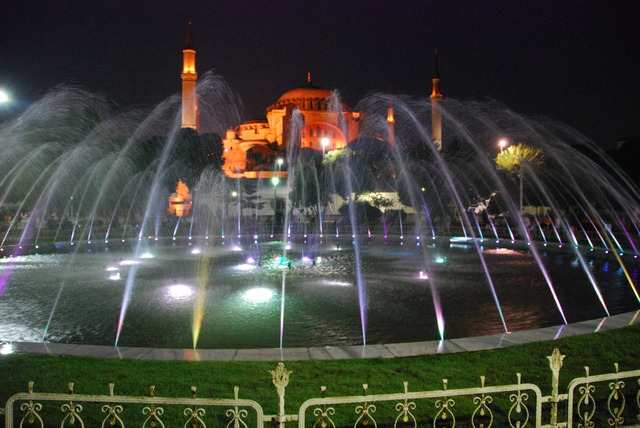On Wednesday, August 4th, Chris and I wanted to see Haghia Sophia. So in order to beat the crowds and get to the head of the tourist lines, we set our alarms and arrived at the gate before 9:00 AM. The tour buses had not arrived yet, but there were about 50 people ahead of us. It was worth the effort. Haghia Sophia is a definite WOW!
It was called the “church of the holy wisdom” and is one of the world’s greatest historical architectural achievements. The vast building was built and inaugurated by the Emperor Justinian in 537 AD. In the 15th century, the Ottomans converted it into a mosque and added the minarets, tombs, and fountains. Recently, the splendid Byzantine mosaics and murals are in the process of being uncovered and restored.
We spent quite a while walking around the interior of Haghia Sophia and admired the architecture and enjoyed the morning light streaming through the windows into the vast space. Both Chris and I took many photos.
Then for something entirely different, we travelled across the Galata Bridge on the tram to visit the Istanbul Modern Art Museum. First we had to figure out how to take public transportation. There are groups of Turkish college students on the busiest tourist corners wearing bright blue tee-shirts with large lettering that says, “Ask Me”. So we asked one of them what the procedure was to take the tram. We were directed to the ticket booth and we purchased four red plastic tokens at 1.50 TL each. That’s worth about one U.S. dollar.
The traveller has to put the plastic token into the slot in the blue turnstiles, wait a second and, at the signal, push the bar and pass onto the platform. The trams are fast, clean, efficient, and air conditioned! We had a fun ride across the Golden Horn to the Beyoglu District. We checked the map and got off at the “Tophane” stop. From there, we walked down to the harbor to the Istanbul Modern.
There was no photography allowed in the museum so, unfortunately, I have no visuals. However it has a decent contemporary Turkish art collection and other exhibits of international contemporary artists’ works. The current photography exhibit was interesting and visually enjoyable.
After having some cold drinks at the museum’s restaurant, we walked back toward the Galata Bridge and stumbled upon a neighborhood of open-air market-type hardware stalls. Every conceivable hardware tool or appliance was for sale from nails to pliers to power tools to snow blowers. The interconnecting narrow alleyways were full of hundreds of these sellers. Home Depot, watch out!
There were no other tourists and the streets were filled with local people. We continued toward the Galata Bridge and found a row of fish stalls along the water. These were clearly the stalls where the Istanbul people buy their fish.
We walked across the Galata Bridge back toward the Sultanahmet District. There are two levels on the bridge. The upper level is for cars, trucks, buses and pedestrians. The lower level is full of restaurants all along both sides running from end to end.
On the other side of the bridge are the teaming masses of people, boats, trams, buses, trains, and cars. When you step off the bridge, the first thing you see is the “New” Mosque. Straight ahead are the small alleyways leading to the Spice Bazaar. On the right, tables and chairs are set up all along the shore for Turkish people to sit and eat. Small fancy gilded boats bob in the water along the seawall, with men grilling fresh fish.
We found the pedestrian tunnel to cross under the street and the tram-way. The tunnel also was lined with busy bright stalls selling souvenirs and other “stuff”. It was packed with people walking through.
We emerged on the other side of the street and out of the tunnel into the bright sunshine. Chris said it was a short walk past the Spice Bazaar to our hotel, so up and into the alleyways we went. I have no idea how he knew that because neither of us had been there before. It was around five o’clock and many stalls were beginning to close. We entered the famous Spice Bazaar to have a look around.
It is a covered area with narrow passageways lined with stalls and shops. As the sign said, the building which houses the current Spice Bazaar was built between 1597 and 1664. However, there was probably a spice bazaar located here for thousands of years, especially considering how important spices were throughout history.
The little streets around this bazaar are also full of stalls and shops and the area joins the Spice Bazaar with the Grand Bazaar, giving the impression of one huge shopping region.
We continued up the hill in the direction of the Grand Bazaar. We passed Gate Number 1 of the bazaar and found a lovely pedestrian street. Here were high-end Turkish shops selling jewelery, carpets, and antiques. There is also a big Starbucks! On one corner, there were three sanitation workers dressed in bright orange overalls, sitting on the steps of a small neighborhood mosque and taking a break from their work. When they spotted us, they said hello and asked us to take their photo and email it to them. One of them gave us his email address!
Just a word about Turkish people. I had read in all the guidebooks that they are very friendly. It is true that everywhere we go, people talk to us! Sometimes they are selling something (anything!) and that becomes obvious pretty soon. The trick is to get away politely. Sometimes they just talk and ask us where we are from or try to guess our home country. Frequently, they ask if we need help or if we are lost. Most of the people seem genuinely friendly, and curious about us.
We returned to the White House Hotel, took a break and then went out to dinner. I wanted to try one of the restaurants I saw near the tram. So we went to The Mosaik Restaurant and had a very good, peaceful dinner.
It was another full day in Istanbul……
